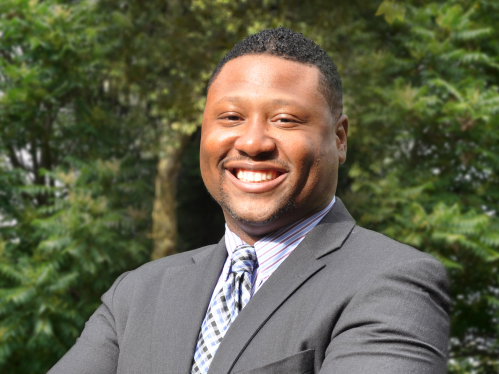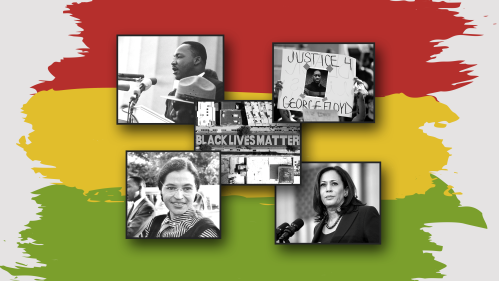
Reflections on Black History
Members of the Rutgers community share their thoughts on the past, present and future

This year we mark Black History Month during an ongoing crisis caused by the COVID-19 pandemic that has disproportionately affected communities of color, a racial reckoning and continued deep division in the country. But despite these incredibly challenging moments, we are also in a time of great change. In the first month of the year, we welcomed a new federal administration and watched as the first woman, and woman of color, was sworn in as vice president of the United States in a historic barrier-breaking moment.
At this time of hope and need for justice and healing, we asked faculty from across Rutgers to share their reflections, add context to this moment in history and help chart a course for a better future.
Knowing Our History
Jonathan Holloway
President and University Professor
The world changed in the winter and spring of 2020 when a series of racially motivated murders unfolded in front of the nation's and the world's eyes. Breonna Taylor, Ahmaud Arbery and George Floyd are the most famous names on this heartbreaking roll call. I can extend several guesses as to why these deaths finally aroused a public that had been comfortable in its anemic understanding of the terms and conditions of Black life in the United States. At some point, though, the guessing doesn't matter. What does matter is determining what we are going to do about it. There is no one solution to the problems that led to Taylor's, Arbery's and Floyd's deaths, but there are any number of ways that individuals can start to make a difference. As a professor, I will always start with emphasizing education. As a professor who specializes in African American history, I believe that we will become a better (and safer) country once we understand the Black experience.
While the very public deaths in 2020 raised a certain consciousness, they were but the latest losses in a long history of violence directed toward Black people. This violence has been experienced by citizens who were doing nothing more threatening than playing in a park or wearing a hoodie. Others have been murdered for doing something more destabilizing: registering to vote, buying a home, going to school, making eye contact. What lessons do we take from these facts? What does it say about us that our fellow citizens died for exercising their rights, for accumulating property, for pursuing an education…for being human?
When we commit ourselves to learning the breadth of this nation's history, we cannot help but be changed for the better. I'm not saying that this is an easy or pleasant task, but anything worth having and celebrating requires hard work.
Holloway’s new book, The Cause of Freedom: A Concise History of African Americans (Oxford University Press) was published this month.
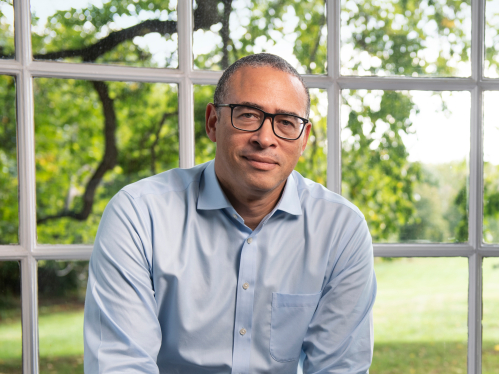
Hank Aaron and the Hill
Elise C. Boddie
Rutgers-Newark director, Institute for the Study of Global Racial Justice and Professor of Law
When Hank Aaron died two weeks ago, the tributes poured in. Mostly, they were about his breaking Babe Ruth’s home run record. But they also told of his life under the virulent strains of racism – the threats against him and his family, the police escorts, the way he used to leave through the back of the ballparks, rather than from the front. For all the glory, in those early days Aaron lived in the shadows of violence. “They carved a piece of my heart away,” he told the New York Times in 1994.
Reading Aaron’s story led me to wonder about the human toll that Black people pay for progress. Is it ever without pain and trauma? Or is Black suffering the American rite of passage to the promised land? “Hank never let the hatred he faced consume him,” George W. Bush wrote in a statement following Aaron’s death, adding that Aaron was a “joyful man.” How peculiar that Black joy only seems to matter in the breach.
Black sacrifice is American currency. Jim Crow followed Reconstruction. The Little Rock Nine came after Brown v. Board of Education. We won the right to vote but had to pay with Bloody Sunday.
I am reminded that in 1978, four years after Aaron’s historic home run, a Supreme Court opinion about affirmative action warned that policies which visibly benefit people of color “are likely to be viewed with deep resentment” and to “outrage” “innocent persons.” The opinion did not name the “innocent.” But I know them. They are the ones who experience Black progress as injustice, a theft from centuries of unjust expectations.
Even the perception of racial progress carries danger. Studies show that racial resentment over Obama may have cost us Trump. Democracy in Georgia came with sedition at the Capitol – a noose and confederate flag added for emphasis.
These last lines from Amanda Gorman’s inaugural poem “The Hill We Climb” caught my attention:
The new dawn blooms as we free it
For there is always light,
if only we’re brave enough to see it
If only we’re brave enough to be it
Who exactly is the “we” who does not yet see the light? And is the problem a failure of bravery or something else we dare not say – that racism endures because America blesses the systems that drive it.
Still, we fight and climb and fight. Because we must. Waiting for the new dawn to come.
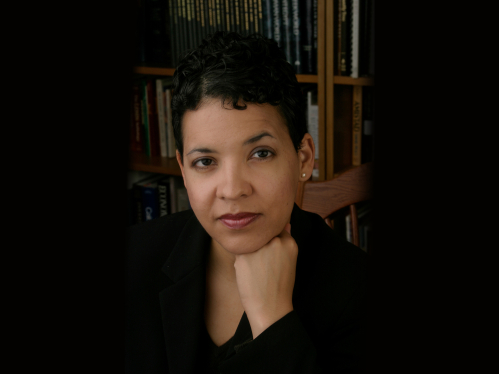
The Scrutiny of Kamala Harris
Kimberly Peeler-Allen
Visiting Practitioner
Center for American Women and Politics, Rutgers-New Brunswick
The election of the first woman, first South Asian woman and first Black woman to the role of vice president is historic beyond words. What is not historic is the level of sexism and misogyny she faces. With the added layer of racism, the scrutiny and attacks Vice President Harris will endure will be at a level never seen.
But what is different in this moment is the general public’s awareness of the types of discrimination that women, and particularly women of color, endure daily, and they are prepared to call out media outlets, influencers and institutions to demand fair treatment. Take, for example, the firestorm over the recent Vogue cover featuring a seemingly casual image of the vice president, and the demands of readers and many media commentators that it be replaced with an image that was appropriately respectful of the Office of the Vice President and the woman who resides within it.
In this post #MeToo and #ThankBlackWomen moment, there is less tolerance for the perpetuation of racist and sexist tropes. However, unfortunately, the vice president is being attacked on everything from her laugh, her appearance and her choice in husband to whether she is too angry or Black enough or feminine enough on a daily basis.
The sexism, racism and misogyny that Vice President Harris is facing will put a spotlight on the experiences of so many Black women, similar to the spotlight that was placed on President Obama’s lived experience. What is different now is the national conversation being had at all levels of society about white supremacy and the perpetuation of patriarchy. It is through that light and national racial reckoning that we may be able to make progress in reducing the double standards women of color face all across this country.
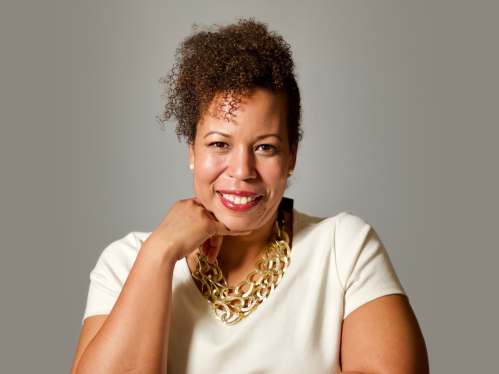



When we commit ourselves to learning the breadth of this nation's history, we cannot help but be changed for the better. I'm not saying that this is an easy or pleasant task, but anything worth having and celebrating requires hard work.
Jonathan Holloway
President and University Professor
A Space for Black Storytelling
Keith Green
Associate Professor of English and Director of Africana Studies, Rutgers-Camden
Recently, we have seen exponential growth of animated content created by, for or starring people of African descent. While it may be new to some, it is actually part of a much greater continuum of Black cultural expression that has endured for centuries. For people of African descent, storytelling has kept us alive and defined the beauty of our culture. Black animation is an integral part of that tradition.
As an undergraduate student, I was introduced to the fascinating world of Black science fiction. Something about these works resonated with me; there was a deeper story within these tales.
I later saw parallels when I studied the American slave narrative, a genre of more than 6,000 texts. Those stories, too, were about people surviving in an alien world surrounded by foreign technology. All the same elements were there.
The more I read and see of contemporary Black animation, the more it looks familiar, like a natural progression of what has long been there. But it’s more than just the progress in representation; it’s the depictions of people of African descent. I recently watched Netflix’s short film Canvas and was amazed by the spectrum of browns used for skin tones. It reminded me of my grandmother’s skin, my son’s hands, of people I know.
What we are seeing now is not surprising in terms of creativity. What is interesting is the mainstream and corporate support for these stories. I think we can attribute much of that to the current political moment. Everything we saw, experienced and felt since last summer has refocused our national attention on the ways justice has not been equally available to people of color, to the ways systemic racism has been ignored and misunderstood. All those issues coming to the fore have created a space for these stories to be told and heard.
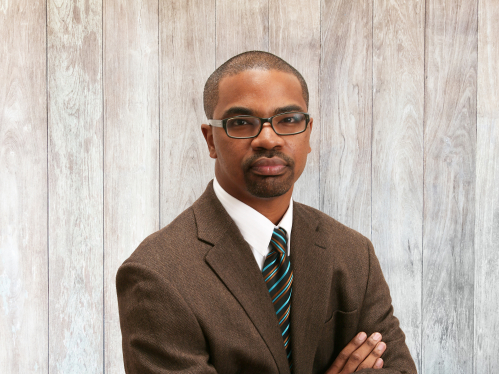
Teaching Black History in Schools and at Home
Wanda J. Blanchett
Dean and Distinguished Professor, Rutgers Graduate School of Education
It’s a no-brainer that we should be teaching Black history in schools, especially in these troubling times, but it's equally important for us to teach it accurately and in its proper context. While schools and educators play a major role in teaching Black history, parents are always their children's first teachers. All parents regardless of their race, and especially parents of Black children, must make sure that even if schools don’t teach it, they do.
If one reviews some of the most historic and landmark education litigation we see how strategic litigation has moved us towards greater levels of educational access and equity. When it comes to the rights of Black and brown people, nothing has been achieved without litigation and subsequent legislation. But decades later we continue to fight for the same ”rights.”
In this digital age it has become impossible for some people to distinguish between fact and fiction. As a result many are led to believe that Black and brown children have an educational achievement gap, when in fact, it is an educational access gap and white privilege that is systemically baked into our educational system that is the REAL problem.
Education can only be effective if we have educators who are well prepared to teach this critical information accurately and in ways that dismantle racism and white privilege and do not reinforce some of these untruths and harmful beliefs. In order to do this we must all first begin with ourselves and examine, confront and challenge our own biases against Black people.
I ask you to challenge yourself to confront institutionalized racism and white privilege and to address your own biases so that as educators, parents and community members we can dismantle the systemic and structural racism that we continue to face today.
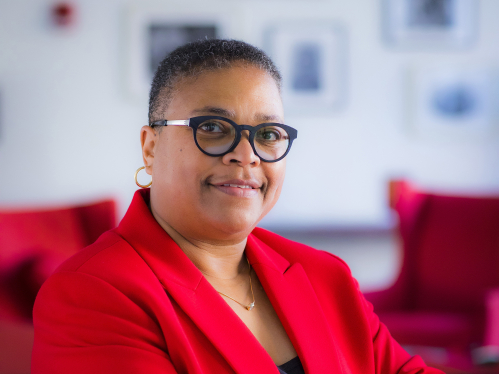
Representation and Policy Making on Capitol Hill
James Jones
Assistant Professor, African American and African Studies, Rutgers-Newark
People of color are dramatically underrepresented in political staff positions throughout our nation’s capital. For example, people of color make up 40 percent the U.S. population, however, in Congress they account for only 13.7 percent of top House staff and 11. 3 percent of top Senate staff. Racial inequality among political professionals is problematic because these individuals assist elected officials in making important policy-making decisions that affect everyone. Fair representation helps to ensure that the policy-making decisions elected officials enact are equitable, just and legitimate. To improve racial representation among political staffers, our nation’s political leaders must be more transparent about who they hire.
Congress and the White House do not collect or publish workforce data on its employees (e.g., their race and gender). This lack of demographic information provides uncertainty to the exact racial and gender makeup of either workplace. This missing data makes it difficult to learn how positions are allocated. In other settings, these demographic data have been an invaluable tool for researchers to measure the presence of discrimination and investigate disparities in pay, promotion and retention. These data can also identify whether people of color are disproportionately hired for racialized positions, where they might only focus on racial issues. Currently, Congress and the White House are exempt from these reporting requirements, which almost all other employers must follow.
My research demonstrates that it is this double standard, where our nation’s leaders are exempt from federal workplace laws that promote equal opportunity and anti-discrimination, that allows inequality among political staffers to continue. The lack of transparency hides who works in government and, more troublingly, prevents the American people from holding political officials accountable for hiring people who look like them.




Black sacrifice is American currency. Jim Crow followed Reconstruction. The Little Rock Nine came after Brown v. Board of Education. We won the right to vote but had to pay with Bloody Sunday.
Elise C. Boddie
Professor of Law
It’s Time for Banks to Treat Black-Owned Businesses Fairly
Yla Eason
Assistant Professor of Professional Practice, Rutgers Business School-Newark and New Brunswick
In a recent report by Citibank, their research revealed startling facts about the cost of discrimination. When I read that “not addressing racial gaps between Blacks and whites has cost the U.S. economy up to $16 trillion over the past 20 years,” I was stunned.
First, I was amazed that Citibank would begin to explore racial financial discrimination when banks are often contributors to this malaise. I knew research by the late Rutgers professor Jerome Williams revealed that the actual treatment of Black-owned businesses seeking small business loans from banks “is consistently poor” and “significantly inferior in critical ways.”
Second, it made me think of the harsh criticism I often hear that generally starts with: “Why don’t Black people own more businesses?” I bristle at this question because it assumes a level playing field exists for those of us who do start businesses. Too often we discover the strange ways our efforts to create wealth through individual ownership of the means of production – basically capitalism – is thwarted by the very institutions that would benefit from it.
As a Black woman business owner who started a toy company in 1985 and grew it to $5 million in sales, I sadly learned that my revenue achievement put me at the top 3 percent of Black-owned businesses. While proud of my accomplishment, it was a stark reminder that our upper level was a lower-middle range for white-owned businesses. The lack of access to capital is one of the reasons for this disparity.
As the report summarized, “providing fair and equitable lending to Black entrepreneurs, might have resulted in the creation of an additional $13 trillion in business revenue and potentially created 6 million jobs per year.”
It’s not too late to change.
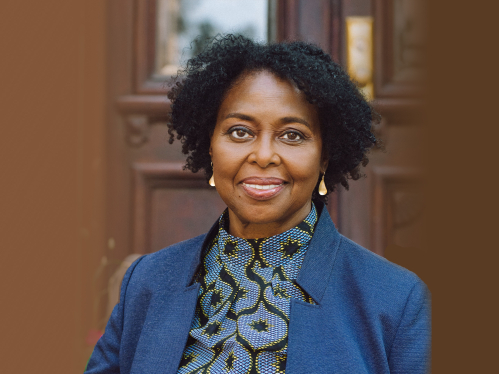
How Allies to the Black Community Can Make a Difference
Oscar Holmes IV
Associate Professor of Management, Rutgers-Camden
The first step for allies is to recognize that a significant amount of self-education and self-reflection is necessary to become an ally.
That is, the onus is on them to learn about diversity and inclusion, rather than to expect those who have been oppressed to teach them. Certainly, a good ally will learn a lot in their interactions with Black and other marginalized people, but the important recognition here is that we are not in service to the ally for this purpose.
Second, it is important for allies to recognize that advances in diversity do not necessarily mean advances in historically excluded groups. I see this happen far too often and unfortunately at the expense of the most marginalized and oppressed groups. Instead, allies should take an intersectional approach in their advocacy and be intentional about addressing the most intractable issues around diversity and inclusion, which most often are issues of racism, sexism and heterosexism.
Third, allies should use their privilege to force, influence and advocate for systemic changes that not only remove significant barriers that impede progress for these groups but also force, influence and advocate for specific policies and practices that will redress past injustices that these groups experienced.
Here a quote by Malcolm X perfectly captures this important point: “If you stick a knife in my back 9 inches and pull it out 6 inches, that’s not progress. If you pull it all the way out, that’s not progress. Progress is healing the wound that the blow made.”
It is not enough to just be a “good” person to someone. An ally needs to work to remedy the harm that has been done and the harm that is still being done. Finally, an ally needs to realize that this is a dynamic identity, not a fixed one. Similar to being anti-racist, an ally can shift in and out of that identity based on their particular actions at any given moment.
